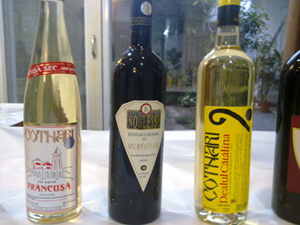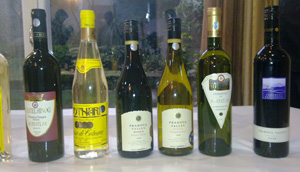 Had you asked me last week about Romanian wines I would have truthfully given the answer “Not a clue mate!!” That gap on my wine knowledge base was filled up over the weekend when the Romanian Embassy in Delhi held a wine tasting at the residence of their Ambassador. Had you asked me last week about Romanian wines I would have truthfully given the answer “Not a clue mate!!” That gap on my wine knowledge base was filled up over the weekend when the Romanian Embassy in Delhi held a wine tasting at the residence of their Ambassador.
Romania has some 250,000 hectares of land under wine cultivation making it the fifth largest producer in Europe and the ninth on the worldwide ladder. Its recent inclusion in the European Community has kindled an aspiration amongst the Romanians to see their wines on retail shelves worldwide so you can now expect to see some Romanian wines soon on the retail shelves.
Romanian wines have traditionally been sold mostly in Europe, in UK – with a substantial amount in the form of bulk wines to blenders in other European countries. The branded wines segment which is now in focus, is dominated by three banners – Mufatlar , Cotnari and Halewood Prahova Valley and the wares of these three producers were unveiled at the tasting.
In addition to the standard Cab Sauv, Pinot Noir and Merlot representations in the red wine category, what caught my attention was the Fetasca Neagra from the Mufatlar’s Nobelse and Castel Hinog stable . The Fetasca Neagra grape is a pre phyloxeric variety of the native Moldovian grape which produces a dark ruby color wine with a reasonable amount of depth and character.
Interestingly the white wine segment was dominated by semi -sweet and sweet wines – according to the Ambassador Her Excellency Valerica Epure, this is reflective of the current trend in Romania where sweet wines are the preferred drink of choice of women across age groups!! Now, whether the sweet wine category would appeal to the female Indian wine drinker remains to be seen.
 Of the dozen odd wines available for tasting that evening, all were young and vigorous value for money labels which I suppose would have benefited from an hour or so of decanting. The wines are currently retailing in Europe in the 2-5 Euro range and whilst no specific prices are available for the Indian market, the importers are looking to position themselves around the Rs 500 mark so as to give them a workable crack at the entry level wine drinker. Of the dozen odd wines available for tasting that evening, all were young and vigorous value for money labels which I suppose would have benefited from an hour or so of decanting. The wines are currently retailing in Europe in the 2-5 Euro range and whilst no specific prices are available for the Indian market, the importers are looking to position themselves around the Rs 500 mark so as to give them a workable crack at the entry level wine drinker.
So it looks like the rash of new entrants from the Baramati/Nashik area are now going to get some international competition –there is going to be a lot of action at the entry level price points and at the end of the day, though many will fall by the wayside , the real winner will be the Indian wine drinker.
Arun Batra
 Arun Batra is a Delhi based food and wine enthusiast and a long time member of the Delhi Wine Club Arun Batra is a Delhi based food and wine enthusiast and a long time member of the Delhi Wine Club
|